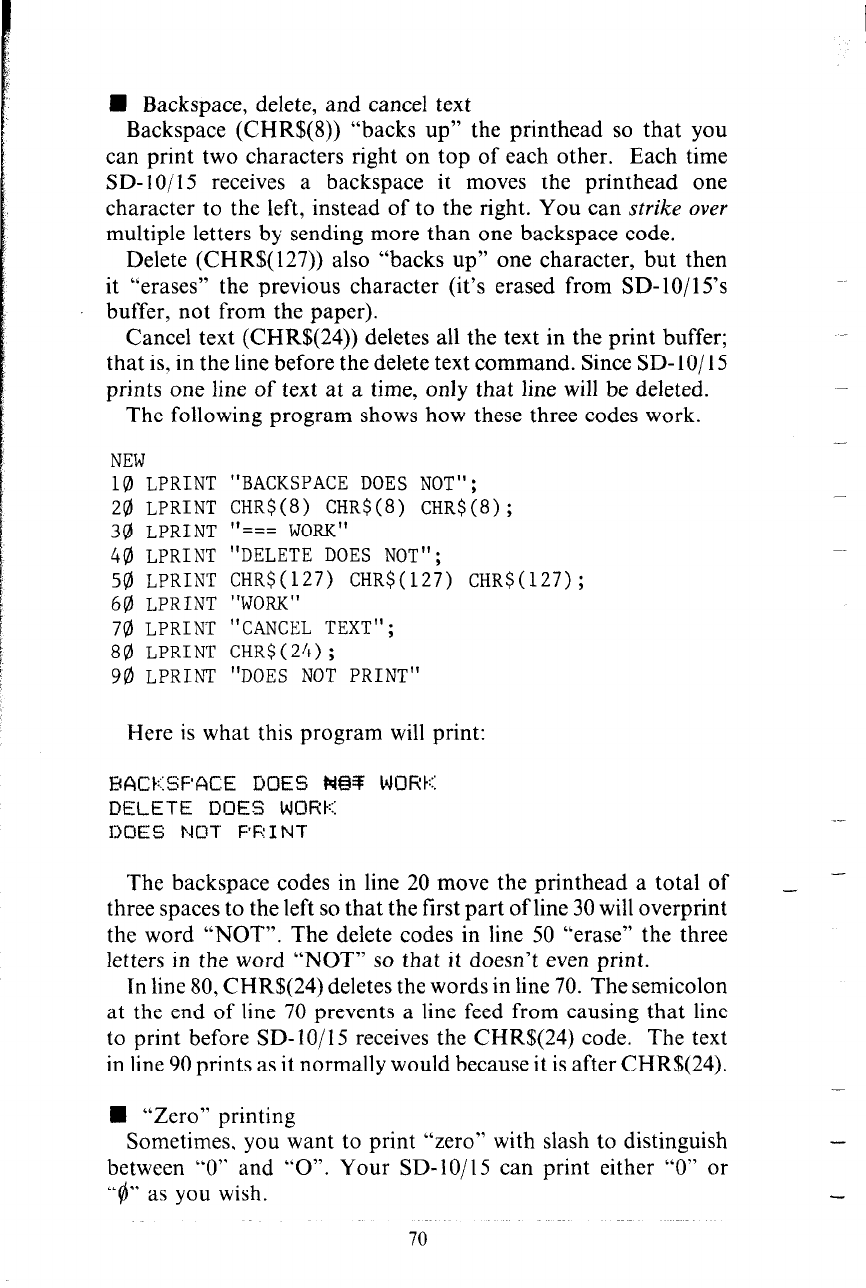
n Backspace, delete, and cancel text
Backspace (CHR$(8)) “backs up” the printhead so that you
can print two characters right on top of each other. Each time
SD-lo/l5 receives a backspace it moves the printhead one
character to the left, instead of to the right. You can strike over
multiple letters by sending more than one backspace code.
Delete (CHR$(127)) also “backs up” one character, but then
it “erases” the previous character (it’s erased from SD-10/15’s
buffer, not from the paper).
Cancel text (CHR$(24)) deletes all the text in the print buffer;
that is, in the line before the delete text command. Since SD-lo/ 15
prints one line of text at a time, only that line will be deleted.
The following program shows how these three codes work.
-
NEW
10 LPRINT "BACKSPACE DOES NOT";
24) LPRINT CHRS(8) CHR$(8) CHR$(8);
3@ LPRINT 'I=== WORK"
44) LPRINT "DELETE DOES NOT";
50 LPRINT CHR$(127) CHR$(127) CHR$(127);
60 LPRINT "WORK"
74) LPRINT "CANCEL TEXT";
80 LPRINT CHR$(24);
9@ LPRINT "DOES NOT PRINT"
Here is what this program will print:
PACKSF’ACE DOES WQT WORK
DELETE DOES WORK
DOES NOT F'RI NT
The backspace codes in line 20 move the printhead a total of
three spaces to the left so that the first part of line 30 will overprint
the word “NOT”. The delete codes in line 50 ‘Lerase” the three
letters in the word “NOT” so that it doesn’t even print.
- _
In line 80, CHR$(24) deletes the words in line 70. The semicolon
at the end of line 70 prevents a line feed from causing that line
to print before SD-IO/IS receives the CHR$(24) code. The text
in line 90 prints as it normally would because it is after CHR$(24).
-
n “Zero” printing
Sometimes. you want to print “zero” with slash to distinguish
between “0” and “0”. Your SD-lo/l 5 can print either “0” or
“8” as you wish.
70


















